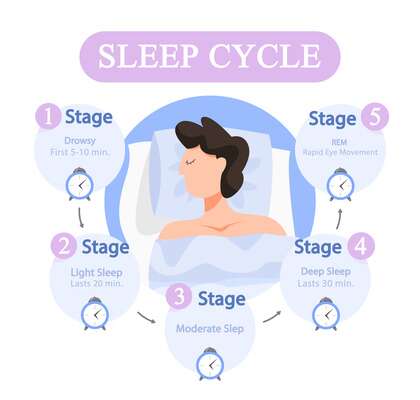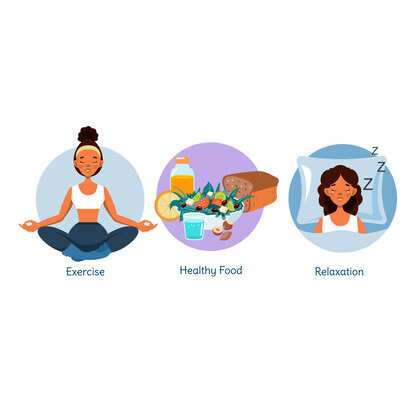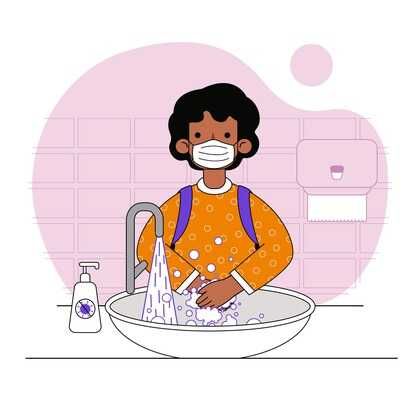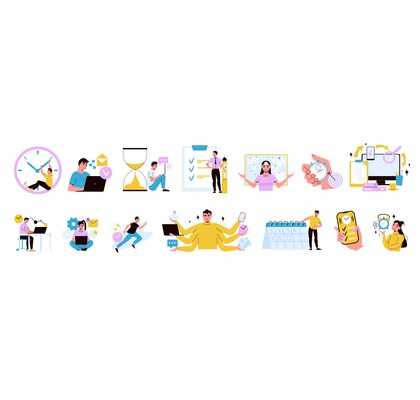Personal hygiene is an essential aspect of our daily lives. It not only helps maintain good physical health but also contributes to our overall well-being. By practicing effective personal hygiene, we can protect ourselves and those around us from various illnesses and infections. In this article, we will explore the art of personal hygiene and discover ways to elevate our daily rituals.
Introduction
Maintaining proper personal hygiene is crucial for a healthy lifestyle. It involves adopting habits that keep our bodies clean, fresh, and free from harmful bacteria. Good personal hygiene not only promotes physical well-being but also boosts self-confidence and enhances our social interactions.
The Basics of Personal Hygiene
Washing Hands
One of the fundamental aspects of personal hygiene is washing hands regularly. Clean hands prevent the spread of germs and reduce the risk of infections. It is important to use soap and water and scrub the hands thoroughly for at least 20 seconds.
Bathing and Showering
Regular bathing or showering helps remove dirt, sweat, and dead skin cells from our bodies. It is recommended to use mild soaps or body washes and pay attention to areas prone to sweat accumulation, such as the underarms and groin.
Brushing Teeth
Maintaining oral hygiene is essential for healthy teeth and gums. Brushing teeth at least twice a day with fluoride toothpaste helps remove plaque and prevents cavities. It is also important to replace toothbrushes every three to four months.
Skincare Routine
Taking care of our skin is an integral part of personal hygiene. Establishing a skincare routine can help keep our skin healthy and radiant.
Cleansing
Cleansing the face with a gentle cleanser removes dirt, oil, and makeup residue. It is advisable to choose products suitable for one’s skin type and cleanse the face twice a day.
Exfoliating
Exfoliation helps remove dead skin cells and promotes cell renewal. Using a mild exfoliator once or twice a week can reveal smoother and brighter skin.
Moisturizing
Moisturizing the skin is essential to maintain its hydration and prevent dryness. Applying a suitable moisturizer after cleansing helps nourish the skin and keeps it soft and supple.
Haircare Practices
Proper haircare is vital for maintaining healthy and lustrous hair. Adopting a regular haircare routine can make a significant difference in the overall appearance and condition of our hair.
Shampooing
Using a suitable shampoo, depending on the hair type, helps remove dirt, oil, and product buildup. It is recommended to wash the hair two to three times a week to maintain its cleanliness and health.
Conditioning
Conditioning the hair after shampooing helps restore moisture and add shine. It is beneficial to choose a conditioner that matches the hair type and apply it mainly to the ends of the hair.
Brushing and Styling
Regularly brushing the hair not only helps detangle it but also stimulates the scalp and promotes blood circulation. It is advisable to use a wide-toothed comb or a brush with soft bristles to avoid hair breakage. Additionally, using heat styling tools sparingly and protecting the hair from excessive heat can prevent damage.
Oral Hygiene
Maintaining proper oral hygiene is essential for a healthy mouth and fresh breath. It involves adopting effective practices to keep our teeth and gums in optimal condition.
Choosing the Right Toothbrush and Toothpaste
Selecting a toothbrush with soft bristles and a toothpaste containing fluoride is important for effective brushing. Electric toothbrushes can provide additional benefits, such as better plaque removal.
Flossing and Mouthwash
Flossing helps remove plaque and food particles from between the teeth and along the gumline. Incorporating mouthwash into the oral hygiene routine can freshen breath and kill bacteria that cause bad breath.
Nail and Foot Care
Proper nail and foot care contribute to overall personal hygiene and well-being. By paying attention to these areas, we can maintain healthy nails and prevent foot-related issues.
Trimming Nails
Regularly trimming nails and keeping them at a reasonable length prevents dirt accumulation and reduces the risk of infection. It is important to use clean and sanitized nail clippers or scissors.
Maintaining Foot Hygiene
Washing feet regularly, especially between the toes, helps prevent fungal infections. Drying the feet thoroughly and applying foot powder or antifungal cream can further protect against foot-related issues.
Invest in your personal hygiene today for a healthier tomorrow.
– John Smith
Clothing and Laundry
Wearing clean clothes and practicing proper laundry techniques are vital aspects of personal hygiene. Clean clothing not only enhances our appearance but also prevents the spread of bacteria and odors.
Wearing Clean Clothes
Changing clothes daily and wearing fresh, clean garments helps maintain personal hygiene. It is important to pay attention to areas prone to sweat, such as underarms and socks, and choose breathable fabrics.
Proper Laundry Practices
Adopting proper laundry practices ensures that our clothes are thoroughly cleaned and free from bacteria and allergens. Separating laundry based on color and fabric type, using appropriate detergent, and following washing instructions are essential steps.
Environmental Hygiene
Maintaining a clean and hygienic living environment is crucial for our health and well-being. By keeping our surroundings clean, we can minimize the risk of infections and promote a healthy lifestyle.
Clean Living Spaces
Regularly cleaning and dusting our living spaces helps eliminate allergens, dust mites, and other potential irritants. Vacuuming carpets, mopping floors, and wiping surfaces contribute to a cleaner and healthier environment.
Regularly Disinfecting Surfaces
Disinfecting frequently touched surfaces, such as doorknobs, light switches, and countertops, helps prevent the spread of germs and viruses. Using appropriate disinfectants or sanitizing wipes can effectively kill bacteria and viruses.
The Importance of a Balanced Diet
Our diet plays a significant role in maintaining personal hygiene. Consuming a balanced and nutritious diet provides essential vitamins and minerals that promote healthy skin, hair, and teeth.
Nutritional Impact on Personal Hygiene
Certain nutrients, such as vitamin C, vitamin E, zinc, and omega-3 fatty acids, contribute to the health and vitality of our skin, hair, and teeth. Including a variety of fruits, vegetables, lean proteins, and whole grains in our diet can improve personal hygiene from within.
Foods for Healthy Skin, Hair, and Teeth
Certain foods have specific benefits for our skin, hair, and teeth. For example, foods rich in antioxidants, such as berries and leafy greens, can help maintain youthful-looking skin. Dairy products and leafy greens are beneficial for strong teeth and bones.
Emotional and Mental Well-being
Personal hygiene extends beyond physical practices; it also encompasses emotional and mental well-being. Taking care of our emotional health positively impacts our overall hygiene and lifestyle.
Self-care Practices
Engaging in self-care activities, such as meditation, practicing gratitude, and pursuing hobbies, helps reduce stress and promotes a sense of well-being. Taking time for oneself is essential for maintaining a balanced and healthy lifestyle.
Stress Management
Stress can negatively affect our physical and mental health, including our personal hygiene. Implementing stress management techniques, such as exercise, deep breathing exercises, and seeking support from loved ones, can help reduce the impact of stress on our daily rituals.
Hygiene in Public Spaces
Maintaining personal hygiene while in public spaces is crucial for our well-being and the well-being of others. By adopting certain practices, we can minimize the risk of infections and stay healthy.
Using Public Restrooms
When using public restrooms, it is important to practice proper hand hygiene, including washing hands with soap and water for at least 20 seconds. Using paper towels or hand sanitizers when necessary can provide additional protection.
Maintaining Cleanliness While Traveling
While traveling, it is essential to carry hand sanitizers, wipes, and tissues to maintain personal hygiene. Avoiding touching the face, eating in clean establishments, and practicing good respiratory hygiene contribute to a healthy travel experience.
Personal Hygiene for Different Age Groups
Personal hygiene practices vary across different age groups. Understanding the specific needs and considerations for each age group can help tailor personal hygiene routines accordingly.
Infants and Children
For infants and children, personal hygiene involves practices such as regular bathing, diaper changing, and oral care. It is important to use age-appropriate products and ensure a safe and clean environment.
Teens and Adolescents
During adolescence, personal hygiene becomes even more critical due to hormonal changes. Establishing proper skincare routines, maintaining oral hygiene, and managing body odor become important aspects of personal hygiene for this age group.
Adults and Seniors
As adults and seniors, personal hygiene practices continue to be essential. Regular medical check-ups, maintaining oral health, and addressing specific hygiene needs related to aging, such as mobility issues, become important considerations.
Hygiene Myths Debunked
There are several common misconceptions about personal hygiene. It is important to debunk these myths and provide accurate information to ensure that individuals are following effective hygiene practices.
Common Misconceptions about Personal Hygiene
Myths such as “natural oils are enough to clean the skin” or “you don’t need to brush your teeth if you chew gum” can lead to improper hygiene practices. Addressing these misconceptions helps individuals make informed decisions regarding their personal hygiene routines.
Clarifying the Facts
By providing accurate information and scientific evidence, we can clarify the facts and guide individuals towards effective and evidence-based personal hygiene practices.
Personal Hygiene Tips for Special Situations
Certain situations require additional attention to personal hygiene. By following specific tips, individuals can maintain their hygiene even in special circumstances.
Hygiene During Illness
When dealing with illness, maintaining personal hygiene is crucial for preventing the spread of infections. Proper hand hygiene, respiratory etiquette, and sanitizing surfaces can help minimize the risk of transmitting illnesses to others.
Hygiene During Pregnancy
Pregnancy brings about specific hygiene considerations. Proper prenatal care, maintaining oral hygiene, and addressing hormonal changes are important aspects of personal hygiene for expectant mothers.
Hygiene for Athletes
Athletes have unique hygiene needs due to their active lifestyles. Regular showering, wearing clean and breathable clothing, and practicing proper foot hygiene are essential for athletes to prevent infections and maintain overall well-being.
Conclusion
Personal hygiene is an art that goes beyond basic cleanliness. By incorporating effective practices into our daily rituals, we can elevate our personal hygiene and enhance our well-being. From handwashing and skincare routines to oral hygiene and environmental cleanliness, every aspect of personal hygiene contributes to our overall health. Prioritizing personal hygiene not only benefits us individually but also promotes a healthier and safer community.














































